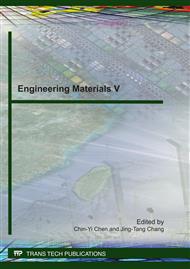p.1
p.8
p.13
p.22
p.27
p.34
p.40
p.48
Effects of Surface Active Element on the Biocompatibility of High Nitrogen Stainless Steel
Abstract:
Nickel-free high nitrogen stainless steel has become more important due to its impressive mechanical and corrosion properties. In contrast to high pressure processes, melting plasma in a normal atmosphere is an alternative way of obtaining high nitrogen content at low cost. However, melting in such an atmosphere will bring some surface impurities, like sulfur and oxygen, into the stainless steel through the refractories or the materials themselves. Therefore, this research aims the relationship between the sulfur and nitrogen content, and their influence on biocompatibility. Thermo-Calc is first used to design the composition of Fe-Cr based austenitic nitrogen stainless steel, and melted with different melting techniques, including plasma and an induction melting furnace. The results indicate that the nitrogen content varies with different sulfur content. It is also found that α-Fe (Ferrite) plates are observed near the grain boundaries when the sulfur content reaches a certain level. Besides, the Sulfur content has an obvious influence on the biocompatibility rather than nitrogen contents.
Info:
Periodical:
Pages:
1-7
Citation:
Online since:
April 2011
Authors:
Keywords:
Price:
Сopyright:
© 2011 Trans Tech Publications Ltd. All Rights Reserved
Share:
Citation:


